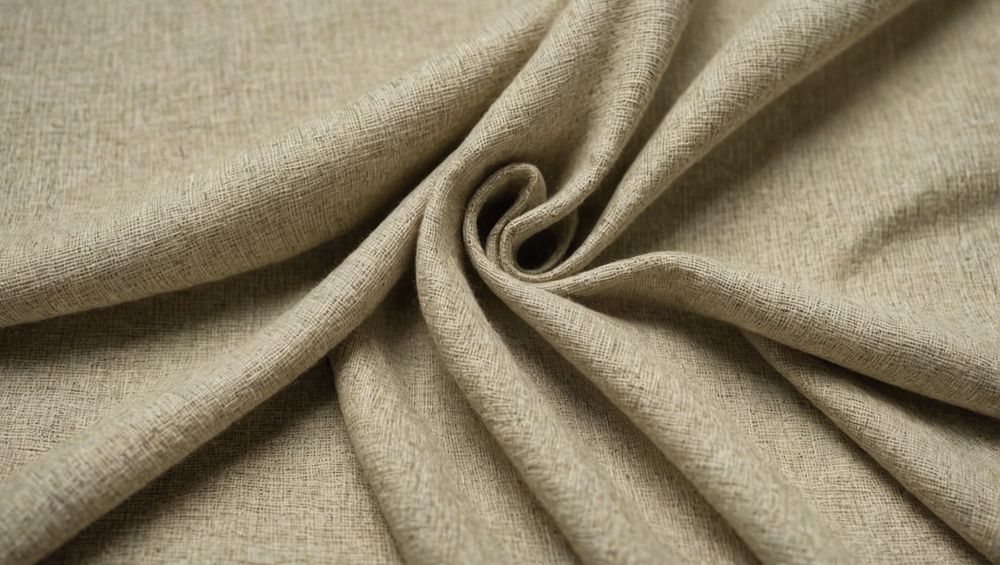Linen is a versatile and eco-friendly fabric derived from the flax plant, celebrated for its durability, breathability, and natural origins. As the fashion world increasingly shifts towards sustainable practices, the demand for linen has surged. With its minimal environmental impact and long-lasting properties, linen is often hailed as one of the most sustainable fabrics available. This article delves deeper into what linen is, its sustainability factors, and whether it truly deserves the title of the perfect sustainable fabric.
The Origins and Production of Linen

Linen is one of the oldest textiles known to humanity, with origins tracing back thousands of years, particularly in ancient Egypt. It is made from the fibers of the flax plant, which is renowned for flourishing in various climates but predominantly thrives in cool, damp regions. The production of linen involves several stages, including growing, harvesting, retting, and processing the flax. During these stages, the plant remains a low-impact crop, often requiring less water and fewer pesticides than cotton and other materials. The key stages of linen production include:
- Growing: Flax is cultivated primarily in Europe and North America.
- Harvesting: Once matured, the plants are harvested by cutting them at the base.
- Retting: A microbial process breaks down the plant’s tissues, allowing for fiber extraction.
- Processing: The fibers are separated from the husks and spun into yarn for weaving.
This meticulous process emphasizes the natural qualities of linen and its minimal reliance on harmful agricultural practices. Moreover, linen production generally has a smaller carbon footprint compared to synthetic fabrics.
Environmental Benefits of Linen

The environmental advantages of linen are numerous, making it an attractive option for eco-conscious consumers. For one, it is biodegradable, meaning it will decompose naturally without harming the planet. Additionally, the flax plant requires significantly less water than cotton and can thrive without the use of synthetic fertilizers, allowing it to flourish in a more sustainable manner. Linen also promotes soil health; its deep-rooted structure can prevent erosion and improve soil quality. Here are some key environmental benefits of linen:
- Water efficiency: Requires significantly less water to grow than cotton.
- Biodegradability: Decomposes naturally without chemical residues.
- Pesticide reduction: Grows with minimal to no need for pesticides.
- Soil preservation: Helps maintain soil quality and prevents erosion.
Despite its many advantages, the textile industry still poses challenges. However, linen remains a standout choice for those wanting to minimize their environmental impact.
Durability and Versatility of Linen
Aside from its sustainable properties, linen is renowned for its impressive durability and versatility. Linen fabric is strong and can withstand much wear and tear compared to other natural fibers. It becomes softer and more comfortable with each wash, making it a favorable choice for various clothing items, home textiles, and accessories. The versatility of linen allows it to be used in a wide range of applications, including:
- Apparel: Dresses, shirts, trousers, and shorts.
- Home textiles: Curtains, bedding, tablecloths, and towels.
- Accessories: Bags, hats, and shoes.
- Upholstery: Durable options for furniture coverings.
Its natural breathability promotes airflow, making linen an ideal choice for warm weather clothing. Furthermore, its inherent resistance to dirt and stains adds to its appeal for practical uses in homes and apparel.
The Challenges of Linen Fabric
Despite all of its benefits, linen isn’t without challenges. One notable drawback is the cost; linen is generally more expensive to produce than synthetic fabrics and even some cotton varieties, primarily due to the more labor-intensive processing methods. Additionally, while linen has many positive qualities, it can wrinkle easily, leading to a more relaxed, casual look that might not suit everyone’s taste. Other challenges include:
- Price: Higher production costs can lead to elevated retail prices.
- Wrinkling: Tends to wrinkle more than other fabrics.
- Maintenance: Requires careful washing and handling to maintain quality.
Despite these challenges, many consumers prefer the unique characteristics of linen and are willing to invest in it as a sustainable fabric option.
Conclusion
Linen is not only an ancient and elegant fabric; it also stands as a strong candidate in the realm of sustainable textiles. With its low environmental impact, durability, and versatility, it is hard to argue against linen being the perfect sustainable fabric. While it has its challenges, the benefits far outweigh the negatives, making linen an ideal choice for eco-conscious consumers and fashion enthusiasts alike. As awareness of sustainable practices continues to grow, it’s clear that linen will play a significant role in shaping the future of fashion and textiles.
FAQs
What are the benefits of linen fabric?
Linen is breathable, durable, biodegradable, requires less water for production, and becomes softer with each wash. It’s also resistant to dirt, which makes it easier to maintain than many other fabrics.
How can I care for linen items?
Linen can be machine washed in cold water and should be air-dried or tumble-dried on a low setting. To preserve its quality, avoid using bleach and opt for mild detergents.
Is linen more sustainable than cotton?
Generally, yes. Linen has a lower water footprint, does not require synthetic pesticides, and is biodegradable, making it a more sustainable choice than traditional cotton.
Does linen wrinkle easily?
Yes, linen does tend to wrinkle more than synthetic fabrics. However, many find the relaxed look of linen appealing, and wrinkles can often add character to the garment.
Can linen be used in all seasons?
Absolutely! Linen is highly breathable, making it perfect for summer months, but its insulating properties also allow it to keep you warm in cooler temperatures when layered appropriately.